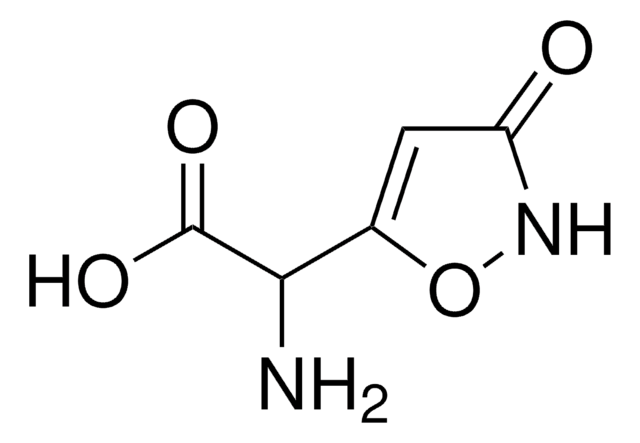General description
ZooMAb® antibodies represent an entirely new generation of recombinant monoclonal antibodies.Each ZooMAb® antibody is manufactured using our proprietary recombinant expression system, purified to homogeneity, and precisely dispensed to produce robust and highly reproducible lot-to-lot consistency. Only top-performing clones are released for use by researchers. Each antibody is validated for high specificity and affinity across multiple applications, including its most commonly used application. ZooMAb® antibodies are reliably available and ready to ship when you need them.
Specificity
Clone 1G15 is a ZooMAb® Rabbit recombinant monoclonal antibody that specifically detects Steroidogenic acute regulatory protein, mitochondrial (StAR).
Immunogen
His-tagged recombinant fragment corresponding to the full-length (without the mitochondrial transit peptide) human Steroidogenic acute regulatory protein, mitochondrial (StAR).
Application
Quality Control Testing
Evaluated by Western Blotting in K562 cell lysate.
Western Blotting Analysis: A 1:10,000 dilution of this antibody detected StAR in K562 cell lysate.
Tested Applications
Western Blotting Analysis: A 1:1,000 dilution from a representative lot detected StAR in lysate from Human adrenal tissue and 1:10,000 dilution in lysates from mouse and rat adrenal tissue.
Immunocytochemistry Analysis: A 1:100 dilution from a representative lot detected StAR in K562 cells.
Immunohistochemistry (Paraffin) Analysis: A 1:1,000 dilution from a representative lot detected StAR in human adrenal gland tissue sections.
Note: Actual optimal working dilutions must be determined by end user as specimens, and experimental conditions may vary with the end user.
Target description
Steroidogenic acute regulatory protein, mitochondrial (UniProt: P49675; also known as StAR, START domain-containing protein 1, StARD1) is encoded by the STAR (also known as STARD1) gene (Gene ID: 6770) in human. STARD1 (StAR) is one of the 15 distinct mammalian proteins that contains a lipid transfer domain spanning about 210 residues that serves as a binding interface for lipids. Its expression is observed in gonads, adrenal cortex, and kidney. STARD1 is a mitochondrial protein that is synthesized with a transit peptide (aa 1-63), which is subsequently cleaved off. It is shown to regulate the rate-limiting step in steroid hormone production pathway in response to hormonal stimuli. It serves as a cholesterol transport protein that moves cholesterol from the outer mitochondrial membrane to the inner membrane in steroidogenic cells to initiate steroidogenesis via CYP11A1-mediated cholesterol conversion to pregnenolone. It serves a critical role for supplying cholesterol to CYP27A1, and thus the generation of endogenous LXR ligands. An alternative mechanism has also been described where conversion of 27-hydroxycholesterol by CYP27A1 activates LXR that induces genes that promote cholesterol trafficking, including its export. Mutations in STAR gene have been linked to adrenal hyperplasia that is characterized by onset of profound adrenocortical insufficiency shortly after birth and elevated plasma renin activity as a consequence of reduced aldosterone synthesis. It also leads to male pseudohermaphroditism resulting from deficient fetal testicular testosterone synthesis. In non-alcoholic steatohepatitis (NASH) subjects elevated levels of STARD1 have been reported that stimulate generation of bile acids from cholesterol via alternate pathway, whose products act in tumor-initiating stem-like cells and hepatocytes to enhance stemness and inflammation. This ZooMAb® recombinant monoclonal antibody, generated by our propriety technology, offers significantly enhanced specificity, affinity, reproducibility, and stability over conventional monoclonals. (Ref.: (Ref.: Conde de la Rosa, L., et al. (2021). J Hepatol. 74(6); 1429-1441; Larsen, MC., et al. (2020). Front. Endocrinol. 11; 559674).
Physical form
Purified recombinant rabbit monoclonal antibody IgG, lyophilized in PBS, 5% Trehalose, normal appearance a coarse or translucent resin. The PBS/trehalose components in the ZooMAb formulation can have the appearance of a semi-solid (bead like gel) after lyophilization. This is a normal phenomenon. Please follow the recommended reconstitution procedure in the data sheet to dissolve the semi-solid, bead-like, gel-appearing material. The resulting antibody solution is completely stable and functional as proven by full functional testing. Contains no biocide or preservatives, such as azide, or any animal by-products. Larger pack sizes provided as multiples of 25 µL.
Reconstitution
300 µg/mL after reconstitution at 25 µL per vial. Please refer to guidance on suggested starting dilutions and/or titers per application and sample type.
Storage and Stability
Recommend storage of lyophilized product at 2-8°C; Before reconstitution, micro-centrifuge vials briefly to spin down material to bottom of the vial; Reconstitute each vial by adding 25 µL of filtered lab grade water or PBS; Reconstituted antibodies can be stored at 2-8°C, or -20°C for long term storage. Avoid repeated freeze-thaws.
Legal Information
ZooMAb is a registered trademark of Merck KGaA, Darmstadt, Germany
Disclaimer
Unless otherwise stated in our catalog or other company documentation accompanying the product(s), our products are intended for research use only and are not to be used for any other purpose, which includes but is not limited to, unauthorized commercial uses, in vitro diagnostic uses, ex vivo or in vivo therapeutic uses or any type of consumption or application to humans or animals.

